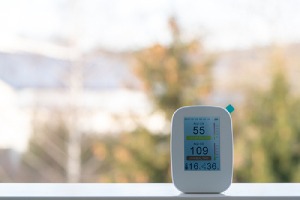Biological contaminants are among the leading dangers that are associated with poor indoor air quality. Some of the substances that are classified as biological contaminants include mold, pollen, bacteria, and pet dander. These particles are invisible to the naked eye, and can be present in your indoor air without your knowledge. If your home’s air is affected by biological contaminants, you may experience allergies and other respiratory issues.
Combustion Pollutants
Combustion pollutants are another serious type of pollutant that may be present in your indoor air. As their name suggests, combustion pollutants are created when fuel is burned, either in a stovetop, fireplace, or furnace. During the combustion process, harmful gases, such as carbon monoxide, can form. Since carbon monoxide poses a deadly health threat to every member of your household, you should make sure that your appliances are not releasing CO into your indoor spaces.
Asbestos
If you live in an older home, it is critical to be aware of the dangers of asbestos. This substance was commonly used as a building material until its health risks to humans was properly known. In the event that asbestos is uncovered, it can release extremely harmful fibers into the air. Your HVAC company can help you create a ductwork maintenance plan that will keep your air clean.

